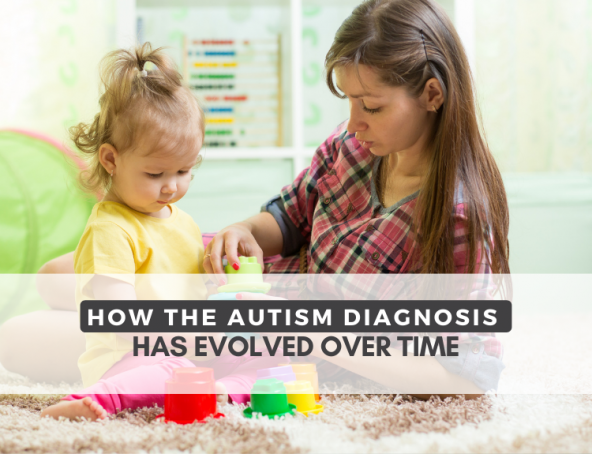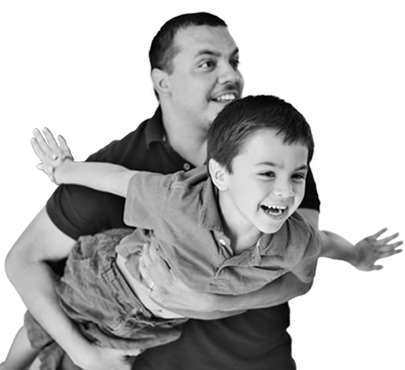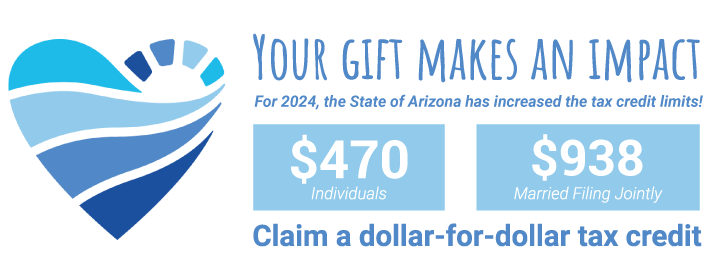How the Autism Diagnosis Has Evolved Over Time

Autism has long been a tricky thing to define. Because it is a behavioral disorder, there are no definitive biological tests that can currently distinguish a child with autism from a child without. Scientists have not yet been able to pinpoint the exact genetic markers that people with autism possess. The “Diagnostic and Statistical Manual of Mental Disorders,” or DSM, has included the commonly accepted definition for 71 years. However, the definition has not stayed constant over that period of time. In fact, it has broadened and narrowed depending on the scientific consensus. The changes made by the DSM have been influential, in that the kinds and amounts of people that qualify for an autism diagnosis change depending on how the DSM currently defines it. In order to estimate the rates of autism, the Centers for Disease Control (CDC) has created a network of 17 sites across the country based on medical diagnoses and school/health care provider records. They focus on eight-year-olds, as they are generally enrolled in school and have had routine health assessments by that time. While this approach allows for a larger number of participants, it is not an in-person evaluation, which is the most accurate method of diagnosis. Here are some of the changes made throughout the years by the DSM and the effects they have had on diagnostic evaluations and the rates of diagnosis.
DSM-I
The psychiatrist Leo Kanner was the first person to describe autism in 1943. Some of the descriptions he wrote of the children under his care included “extreme autistic aloneness” and “delayed echolalia.” He also noted that these children could be otherwise intelligent yet exhibit extreme deficits in social behaviors. Kanner viewed the disorder as one that was a “profound emotional disturbance” that “did not affect cognition.” When the first edition of the DSM was written in 1952, the word ‘autism’ only appeared once in the whole document. At that time, autism was thought to be connected to schizophrenia and that only because of their “immaturity” did these children exhibit different behaviors from adults with the diagnosis. In 1966, researchers estimated that somewhere between 1 in 2,500 to 10,000 children had autism, reflecting how rare most clinicians thought the disorder was at that time. This may have also had to do with the large numbers of these children who were placed into mental institutions.
DSM-II
In 1968, the second edition of the DSM came out, describing autism as a form of schizophrenia that presented in childhood. It was defined as a psychiatric condition marked by a detachment from reality. Common thinking during this period blamed unemotional and cold mothers for the development of the disorder in children. This misperception continued through the majority of the 1960s and 1970s. Many people with autism were institutionalized at this time, resulting in a lack of awareness of the disability by the general public. The estimated prevalence of autism remained steady through the 1970s at about 1 in 2,000 children, possibly due to the “invisibility” of so many children placed in mental institutions. This continued until the 1980s, when there was a de-emphasis on institutionalization.
DSM-III
The third edition of the DSM, released in 1980, marked a change in the description of autism. For the first time, it was defined as a developmental disorder distinct from schizophrenia. Additionally, up until the DSM-III it was largely up to the clinicians’ interpretation whether the diagnosis of autism was appropriate. This edition, however, listed specific criteria that were requirements for a diagnosis. These included impairments in communication, bizarre responses to the environment, and a lack of interest in people. In 1987, the DSM-III was revised by adding pervasive developmental disorder-not otherwise specified (PDD-NOS) and eliminating the requirement that the onset of symptoms occur before 30 months. In addition, only 8 of the 16 criteria needed to be met to earn a diagnosis of autism, as opposed to all six of the previous DSM’s criteria. These changes may have contributed to the condition’s prevalence reaching above 1 in 1,400 in 1987. Then, in 1991, the U.S. Department of Education ruled that a diagnosis of autism qualifies a child for special education services, greatly enhancing the usefulness of a child receiving the diagnosis. Parents were now much more likely to accept the diagnosis so their child could receive the extra services.
DSM-IV
In 1994, the DSM-IV was released, marking the first edition to categorize autism as a spectrum disorder. It added Asperger’s disorder, childhood disintegrative disorder (CDD) and Rett syndrome as “types” of autism that may manifest in different ways. PDD-NOS was also kept as a way of categorizing children whose behaviors did not meet the specific criteria for autism, but who may still benefit from different forms of behavioral intervention. The research hypothesis at the time was that genetic markers would be found for all five different “types” of autism. While that didn’t end up being the case, these changes, plus other factors, resulted in the rate of autism diagnosis expanding dramatically. In the early 2000s, various studies estimated rates to be about 1 in 150, and later reaching 1 in 88 by 2008. Children who exhibited more mild forms of autism were now more likely to be diagnosed with the disability. This primarily consisted of those with Asperger’s disorder and pervasive developmental disorder-not otherwise specified (PDD-NOS).
DSM-V
The release of the DSM-V in 2013 included 6 major changes to the editions that preceded it. These changes consisted of:
- Four categories that were distinct were now included in one umbrella diagnosis of autism spectrum disorder (autistic, Asperger’s, childhood disintegrative disorder, and PDD-NOS).
- There was a consolidation of three previous categories of autism into two (social impairment, language/communication impairment, repetitive/restrictive behaviors) became (persistent deficits in social communication and interaction & restricted, repetitive patterns of behavior).
- The addition of sensory issues.
- The addition of levels of support in each of the two categories
- The addition of any known genetic cause of autism, language level, intellectual disability, and the presence of autism related medical issues.
- The creation of a new diagnosis of social communication disorder, which is not classified as a form of autism but may apply to some individuals who would previously be considered for an autism diagnosis.
At the time that DSM-V came out, many people thought that the rates of autism would go down as a result of the seemingly stricter definition. However, it was found that one in 54 children had been diagnosed with autism by age 8 in 2016, compared to 1 in 150 in 2000. And most recently in 2023, the CDC released a report estimating that 1 out of every 36 children has autism, although this data only includes children of certain ages. That number significantly increased the 2021 estimate of 1 in 44. The changes in the DSM-V not only did not reverse the increasing rates of diagnoses, they look to have further accelerated them. From 1952 until today, the rates of autism have increased dramatically with no sign of slowing.
Other Factors That May Contribute to Autism Diagnosis Rates
There may be other factors for the increase in autism diagnosis rates as well. It has been found that rates of intellectual disability have decreased at the same time that rates of autism have increased. It is possible that children who were previously misdiagnosed with intellectual disabilities are now being correctly diagnosed with autism. In addition, since 2001 all fifty states have passed insurance mandates requiring almost all insurance plans to cover behavioral therapies for autism. Doctors and parents may be pushing harder for a diagnosis to benefit from the increased coverage of behavioral therapies. Another factor may have been the American Academy of Pediatrics recommending all children between 18 and 24 months get screened for autism during routine visits to the pediatrician. And finally, Hispanic and African American children have not traditionally been diagnosed at the same rate as white children, but increased screening in these communities has resulted in higher rates of diagnosis, and consequently, better access to behavioral therapies.
Other factors to consider include an increase in awareness of red and pink flags, which also relates to greater understanding that bright and verbal children can also have autism, better understanding of what symptoms of autism look like in different children, understanding that children with autism do not necessarily display significant behavioral issues, clearer definitions of autism (resulting in less uncertainty when providing the diagnosis and thus more willingness), more providers being trained and comfortable diagnosing (although still not enough), greater understanding of neurodiversity, and a general societal trend toward more acceptance and less stigma associated with an autism diagnosis.
Autism’s inclusion, and numerous revisions, in the DSM over the years has had huge consequences for millions of people with the developmental disability and their families. Vital access to behavioral health services is often dependent on a physician providing the diagnosis of autism based on the current definition in the DSM. The nature of how to define autism also lends itself to changes due to the opinions of the behavioral scientists of the time. The lack of a blood test or brain scan to definitively diagnose the condition will likely always lead to forms of disagreement or changes in opinion. There are also different schools of thought between psychologists, which can further contribute to disagreements. What is inarguable though, is that many more children diagnosed with the disability have received important behavioral therapies as a result of the increase in diagnosis rates. Whether this is sustainable remains to be seen, but for now the changes in the DSM have been a lifeline for millions of families.
Contact our Family Support Team if you would like to learn how to get started with diagnostic evaluations or any other programs and services that we offer. Our Family Support Team is always available to help and is available at no charge to all members of the autism and developmental disability community. Schedule a free phone appointment that works with your schedule by visiting AZAunited.org/supportcall
You may also be interested in:
For more helpful resources and information, follow AZA United on social media:






